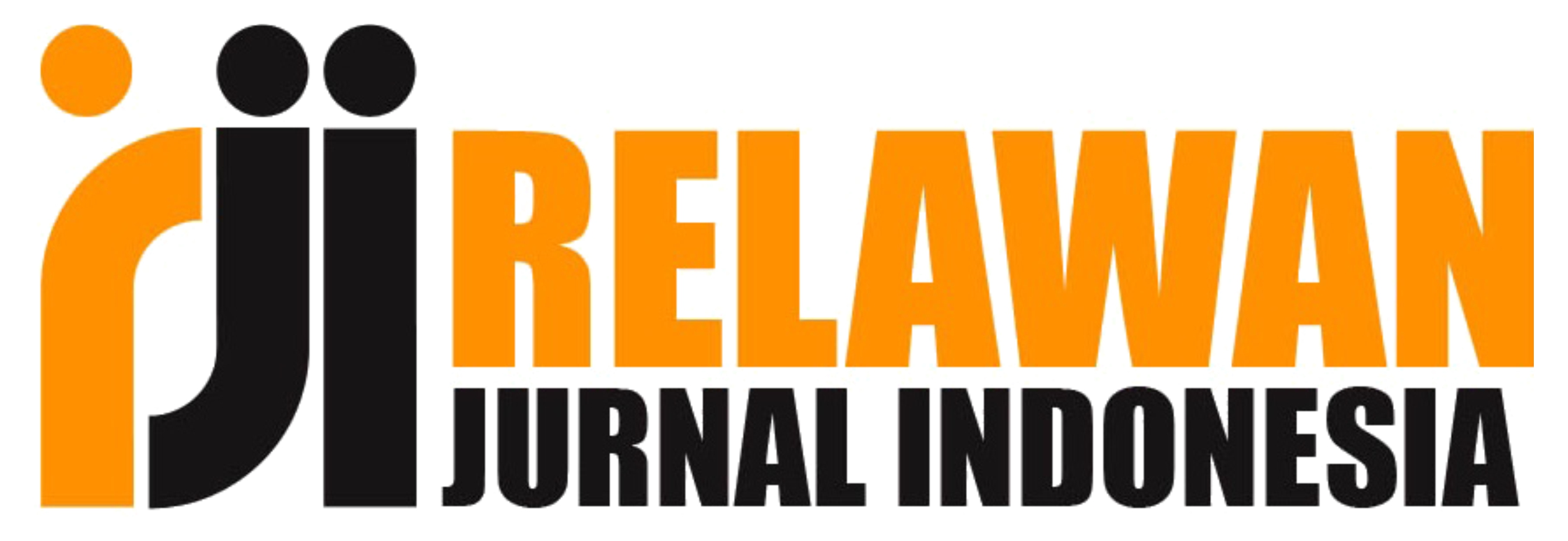Women Attribute and Household Level Factor on Women's Empowerment
Abstract
Empowerment is an important strategy in increasing the role and opportunities of women in improving their economy and is an effort to increase and actualize their potential so that they are more able to be independent and work, and are more appreciated. This study aims to analyze the probability of empowering women in the songket craft business, testing and analyzing the variable women attribute and household level factor on women's empowerment . Tests are carried out using binary logistic regression .  The results showed that the variables of age, education, and work experience had a significant effect on women's empowerment. The policy implication of the results of this study is that there needs to be more serious attention and involvement from the  government and other institutions in coaching women songket craftsmen, and improving the quality of women through various activities to empower them through songket business activities.
Keywords
Full Text:
PDFReferences
Agresti, A. (2007). An Introduction to Categorical Data Analysis (Second Edi). John Wiley & Sons, Inc. https://doi.org/10.1198/jasa.2008.s251
Ayevbuomwan, O. S., Popoola, O. A., & Adeoti, A. I. (2016). Analysis of Women Empowerment in Rural Nigeria: A Multidimensional Approach. Global Journal of Human- Social Science: C Sociology & Culture, 16(6), 19–32.
Bangun, B. H. (2020). Hak Perempuan dan Kesetaraan Gender dalam Perspektif Filsafat Hukum. Pandecta Research Law Journal, 15(1), 74–82. https://doi.org/10.15294/pandecta.v15i1.23895
Batool, S. A., Ahmed, H. K., & Qureshi, S. N. (2017). Impact of Demographic Variables on Women’s Economic Empowerment: An Ordered Probit Model. Journal of Women and Aging, 30(1), 1–22. https://doi.org/10.1080/08952841.2016.1256734
Batool, S. A., & Jadoon, A. K. (2018). Women’s Empowerment and Associated Age-Related Factors. Pakistan Journal of Social and Clinical Psychology, 16(2), 52–56.
Biswas, C. S., & Mukhopadhyay, I. (2018). Marital Status and Women Empowerment in India. Sociology International Journal, 2(1), 29–37. https://doi.org/10.15406/sij.2018.02.00030
BPS. (2019). Sakernas Februari 2019. BPS RI.
Bushra, A., & Wajiha, N. (2015). Assessing the Socio-Economic Determinants of Women Empowerment in Pakistan. Procedia - Social and Behavioral Sciences, 177(July 2014), 3–8. https://doi.org/10.1016/j.sbspro.2015.02.321
Daulay, Z. A. A. (2018). Strategi Pengembangan Ekonomi Kreatif Dengan Metode Triple Helix (Studi pada UMKM Kreatif di Kota Medan). Tansiq, 1(2), 169–190.
Duflo, E. (2011). Women’s Empowerment and Economic Development. Working Paper Series, 17702(July), 1–7.
Forouzani, M., & Mohammadzadeh, L. (2018). Empowerment of the Members of Rural Women’s Cooperatives: The Impact of ICTs in Rural Districts of Urmia County, Iran. Asian Women, 34(4), 77–99. https://doi.org/10.14431/aw.2018.12.34.4.77
Gholipour, A., Rahimian, A., Mirzamani, A., & Zehtabi, M. (2010). Impacts Model of Women’s Empowerment. International Business Research, 3(1), 57–65.
Habib, K., Shafiq, M., Afshan, G., & Qamar, F. (2019). Impact of Education on Women Empowerment. European Online Journal of Natural and Social Sciences, 8(3), 62–74.
Haque, M., Islam, T. M., Tareque, I., & Mostofa, G. (2011). Women Empowerment or Autonomy : A Comparative View in Bangladesh Context. Bangladesh E-Journal of Sociology, 8(2), 17–30. https://www.bangladeshsociology.net/8.2/2BEJS 8.2-3.pdf
Hasin, F., Hasan, A. K. M. B., & Musa, H. (2018). Women Empowerment Model: Strategies To Overcome Challenges. J Fundam Appl Sci, 10(1S), 1068–1083. https://doi.org/10.4314/jfas.v10i1s.78
Hazarika, B., & Goswami, K. (2016). Do Home-Based Micro-Entrepreneurial Earnings Empower Rural Women? Evidence from the Handloom Sector in Assam. Asian Journal of Women’s Studies, 22(3), 289–317. https://doi.org/10.1080/12259276.2016.1205376
Hosmer, David W, J., Lemeshow, S., & Sturdivant, R. X. (2013). Applied Logistic Regression. (Third Edit). John Wiley & Sons, Inc.
Hunt, A., & Samman, E. (2016). Womens Economic Empowerment. Navigating Enablers and Contraints. Research Report. (Issue September).
Khan, S. U., & Awan, R. (2011). Contextual Assessment of Women Empowerment and Its Determinants: Evidence from Pakistan. In Munich Personal RePEc Archive (No. 30820).
Mahmud, S., Shah, N. M., & Becker, S. (2012). Measurement of Women’s Empowerment in Rural Bangladesh. World Development, 40(3), 610–619. https://doi.org/10.1016/j.worlddev.2011.08.003
Menon, S., Ranjitha, M., & Sharma, S. (2020). A study on the Status of Women’s Empowerment in Urban Bangalore, India. Journal of International Women’s Studies, 21(5), 54–64.
Obayelu, O. A., & Chime, A. C. (2020). Dimensions and Drivers of Women’s Empowerment in Rural Nigeria. International Journal of Social Economics, 47(3), 315–333. https://doi.org/10.1108/IJSE-07-2019-0455
PEKKA, & SMERU. (2014). Menguak Keberadaan dan Kehidupan Perempuan Kepala keluarga (PEKKA & SMERU (ed.); Cetakan 1). Lembaga Penelitian SMERU.
Rani, K., & Principal, M. (2019). Women Empowerment- A Tool of National development. Journal of Emerging Technologies and Innovative Research (JETIR), 6(3), 186–190.
Riduwan, & Akdon. (2013). Rumus dan Data Dalam Analisis Statistika. Alfabeta.
Sekaran, U. (2011). Research Methods For Business: Metodologi Penelitian untuk Bisnis (Buku 2, Edisi 4). Salemba Empat.
Sheikh, Q. A., Meraj, M., & Mahapara Sadaqat. (2016). Gender Equality and Socio-Economic Development Through Women’s Empowerment in Pakistan. Ritsumeikan Journal of Asia Pacific Studies, 34(February), 142–160.
Sohail, M. (2014). Women Empowerment and Economic Development-an Exploratory Study in Pakistan. Developing Country Studies, 4(9), 163–170.
Sudatta, B., Swati, A., & Bincy, G. (2020). Determinants of Women Empowerment as Measured by Domestic Decision-Making: Perspective from a Developing Economy. Advanced Issues in the Economics of Emerging Markets, 27, 1–12. https://doi.org/10.1108/S1571-038620200000027001
Sulistyowati, T. (2015). Model Pemberdayaan Perempuan dalam Meningkatkan Profesionalitas dan Daya Saing untuk Menghadapi Komersialisasi Dunia Kerja. Jurnal Perempuan Dan Anak, 1(1), 1–11. https://doi.org/10.22219/jpa.v1i1.2748
Swain, R. B., & Wallentin, F. Y. (2008). Economic or Non-Economic Factors – What Empowers Women ? Working Paper Series, 11, 1–38. http://ideas.repec.org/p/hhs/uunewp/2008_011.html
Trommlerová, S. K., Klasen, S., & Leßmann, O. (2015). Determinants of Empowerment in a Capability-Based Poverty Approach: Evidence from the Gambia. World Development, 66, 1–15. https://doi.org/10.1016/j.worlddev.2014.07.008
Upadhyay, U. D., & Karasek, D. (2012). Women’s Empowerment and Ideal Family Size: An Examination of DHS Empowerment Measures in Sub-Sahara Africa. International Perspectives on Sexual and Reproductive Health, 38(2), 78–89. https://doi.org/10.1363/3807812
Varghese, T. (2011). Women Empowerment in Oman: A Study Based on Women Empowerment Index. Far East Journal of Psychology and Business, 2(2), 37–53. https://www.researchgate.net/publication/50829269
Welsh, D. H. B., Memili, E., & Kaciak, E. (2016). An Empirical Analysis of the Impact of Family Moral Support on Turkish Women Entrepreneurs. Journal of Innovation & Knowledge, 1, 3–12.
Yogendrarajah, R., & Semasinghe, D. (2013). Impact of Demographic Factors on Women Empowerment Through Micro Credit – A Special Reference to Jaffna District. ZENITH International Journal of Business Economics & Management Research, 3(10), 59–67.
DOI: http://dx.doi.org/10.24856/mem.v36i2.2124
Refbacks
- There are currently no refbacks.
Copyright (c) 2021 Media Ekonomi dan Manajemen

This work is licensed under a Creative Commons Attribution 4.0 International License.
Â

This work is licensed under a Creative Commons Attribution 4.0 International License.






